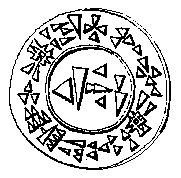Mopsus was the name of one of two famous seers in Greek mythology; his rival being Calchas. A historical or legendary Mopsos or Mukšuš may have been the founder of a house in power at widespread sites in the coastal plains of Pamphylia and Cilicia during the early Iron Age.
Tudhaliya I was a king of the Hittite Empire in c. the early 14th century BC.
Arnuwanda III was the penultimate king of the Hittite empire c. 1215–1210 BC or c. 1209–1207 BC.
Mursili II was a king of the Hittite Empire c. 1330–1295 BC or 1321–1295 BC.
Arnuwanda II was a king of the Hittite Empire ca. 1330 BC or 1322–1321 BC. He succeeded his father Suppiluliuma I, who succumbed to the plague which Egyptian captives from his Canaan campaign had brought with them to the Hittite heartland.
Arnuwanda I was a king of the Hittite Empire. He became a ruler by marriage and was very religious. He ruled c. 1390–1380 BC.
Tudhaliya II was a king of the Hittite empire c. 1380–1370 BC or 1360? – 1344 BC. He was the son of King Arnuwanda I and Ašmu-nikal.

Alashiya, also spelled Alasiya, also known as the Kingdom of Alashiya, was a state which existed in the Middle and Late Bronze Ages, and was situated somewhere in the Eastern Mediterranean. It was a major source of goods, especially copper, for ancient Egypt and other states in the Ancient Near East. It is referred to in a number of the surviving texts and is now thought to be the ancient name of Cyprus, or an area of Cyprus. This was confirmed by the scientific analysis performed in Tel Aviv University of the clay tablets which were sent from Alashiya to other rulers.

Madduwatta was a Late Bronze Age warlord who conquered a portion of southwest Anatolia. He is known from the Hittite text known as the Indictment of Madduwatta.
The Kaska were a loosely affiliated Bronze Age non-Indo-European tribal people, who spoke the unclassified Kaskian language and lived in mountainous East Pontic Anatolia, known from Hittite sources. They lived in the mountainous region between the core Hittite region in eastern Anatolia and the Black Sea, and are cited as the reason that the later Hittite Empire never extended northward to that area. They are sometimes identified with the Caucones known from Greek records.
Pitassa is an as-yet undiscovered frontier city in western Anatolia, mentioned in Bronze Age archives at Hattusa. The name seems Luwian or considered Hittite. It occasionally formed the border between Hatti and various iterations of Arzawa. Another account referred to it as an imperial geographical designation for the region found at the foot of the Sultan Mountains and extend northwards all the way to the Sakarya River and Gordion near Polath. It is also described as part of the region of Classical Lycaonia, which was located east of the Salt Lake.

Zalpuwa, traditionally also thought to be Zalpa, was a still-undiscovered Bronze Age city in Anatolia of around the 18th century BC. Its history is largely known from the Proclamation of Anitta, CTH 1. It has now been proposed that the Zalpa mentioned in the Annals of Hattusili I, CTH 4, was a different city located at Tilmen Höyük, in the Karasu River Valley south of the Taurus Mountains by Tubingen and Chicago Universities recent excavations.
Arnuwanda was the name of the three Hittite emperors:

Ašmu-nikal was a Queen consort of the Hittite empire.
Kisnapali was a Hittite general during the reign of Tudhaliya I in the early 14th century BC. The Hittite text known as the Indictment of Madduwatta reports that he supported the Hittite vassal Madduwatta against the Ahhiyan warlord Attarsiya, but was later betrayed by Madduwatta and died in battle near Dalawa.

Attarsiya was an Ahhiyan warlord who lived around 1400 BC. He is known from a single Hittite text, which recounts his military activities in Western Anatolia and Alasiya. These texts are significant because they provide the earliest textual evidence of Mycenaean Greek involvement in Western Anatolian affairs. Scholars have noted potential connections between his name and that of Atreus from Greek mythology.
Henti was a Hittite queen, the wife of King Suppiluliuma I. She assumed her role as Tawananna after the King's mother Daduhepa died. Henti bore five sons to Suppiluliuma: Arnuwanda II, Telipinu, Piyassili, Mursili II, and Zannanza. Two of her sons succeeded to the throne, Arnuwanda and Mursili II.

Hapalla, also written as Haballa, was a kingdom in central-western Anatolia during the Late Bronze Age. As one of the Arzawa states, it was a sometime vassal and sometime enemy of the Hittite Empire.

The Seha River Land was a kingdom in Western Anatolia in the Late Bronze Age known from Hittite texts. Part of Arzawa, it was located north of Mira and south of Wilusa, and at one point controlled the island of Lazpa.



